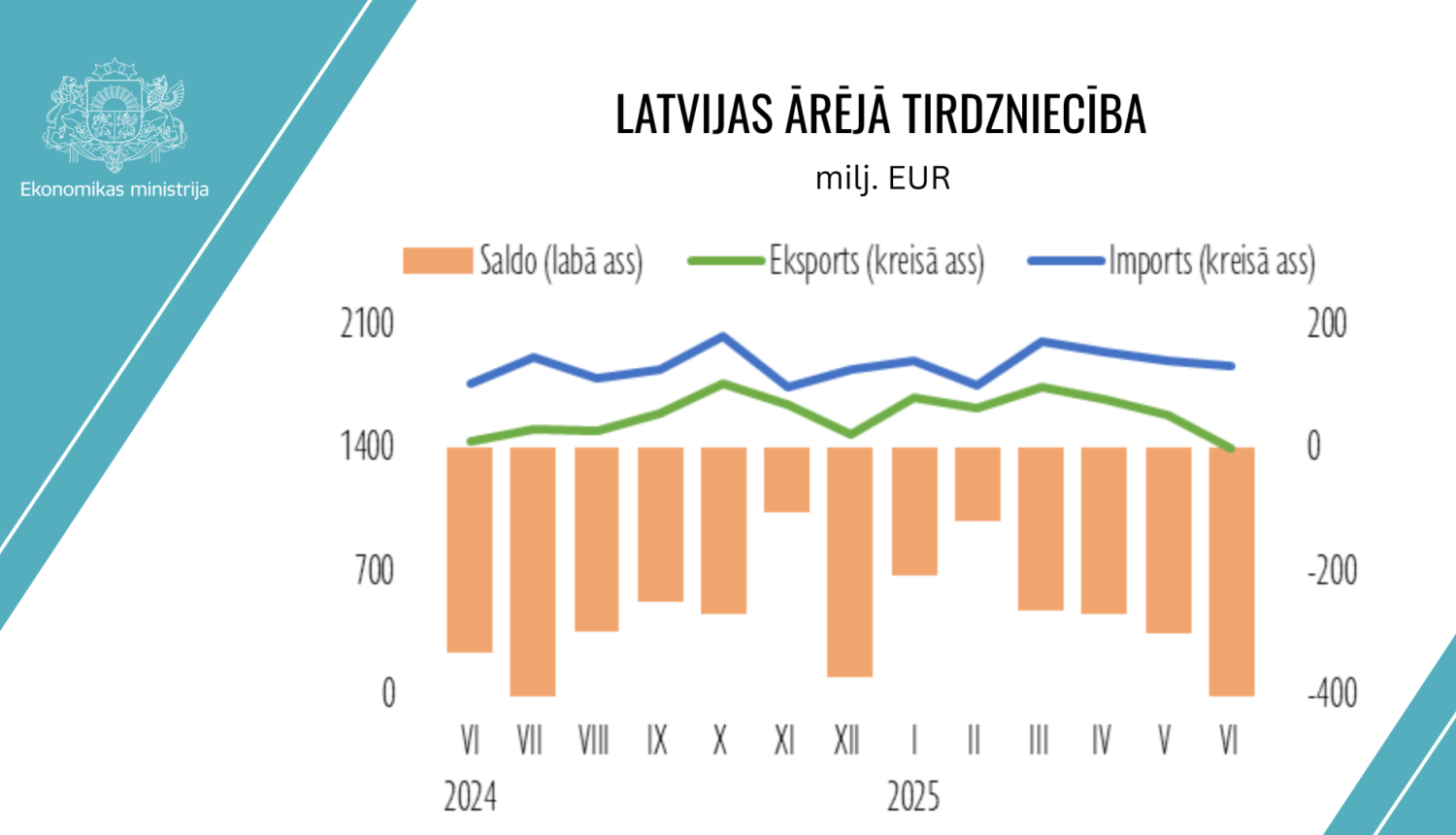Translated using ChatGPT service.
Although June saw a slight decrease in exports within the month, overall, in the first half of the year, an upward trend persisted, supported by both external demand and entrepreneurs’ ability to adapt to changing conditions by expanding their presence in foreign markets.
In June, the value of goods exports at current prices was 2.6% lower than a year earlier. Meanwhile, imports grew by 5.4%, and the trade deficit in June amounted to 14.2% year-on-year.
Overall, in the first half of 2025, goods exports at current prices were 3.9% higher than a year earlier, while imports of goods increased by 7.9% over the same period.
Year-on-year, there was a significant increase in the export value of dairy products and land vehicles. Exports also rose for cereal products, fertilizers, plastics and articles thereof, as well as furniture. By contrast, the export value of cereals, wood and wood products, and animal feed declined.
In June of this year, compared with the corresponding period of the previous year, exports to EU countries increased by 0.1%. Export values grew more strongly to neighboring countries – Lithuania (vehicles, dairy products) and Estonia (mineral products, fertilizers) – while they declined to Finland (wood) and Denmark (animal and vegetable fats).
Exports to CIS countries fell slightly – by 0.1% – including to Kazakhstan (perfumery) and Belarus (optical instruments). At the same time, exports increased to Russia (cereal products, clothing) and Uzbekistan (pharmaceutical products). Overall, exports to Russia show a downward trend, and they are expected to continue to decline. The increase observed in June can be partly explained by the base effect.
Meanwhile, exports to other countries outside the EU and CIS fell sharply – by 11.4%. Exports declined to Ukraine (unspecified goods), as well as to Turkey (iron and steel), South Africa (cereals), and the USA (wood).
In June, year-on-year import growth was positively influenced by the increase in the import value of land vehicles, electrical devices and equipment, as well as machinery and appliances. By contrast, imports of mineral products decreased.



